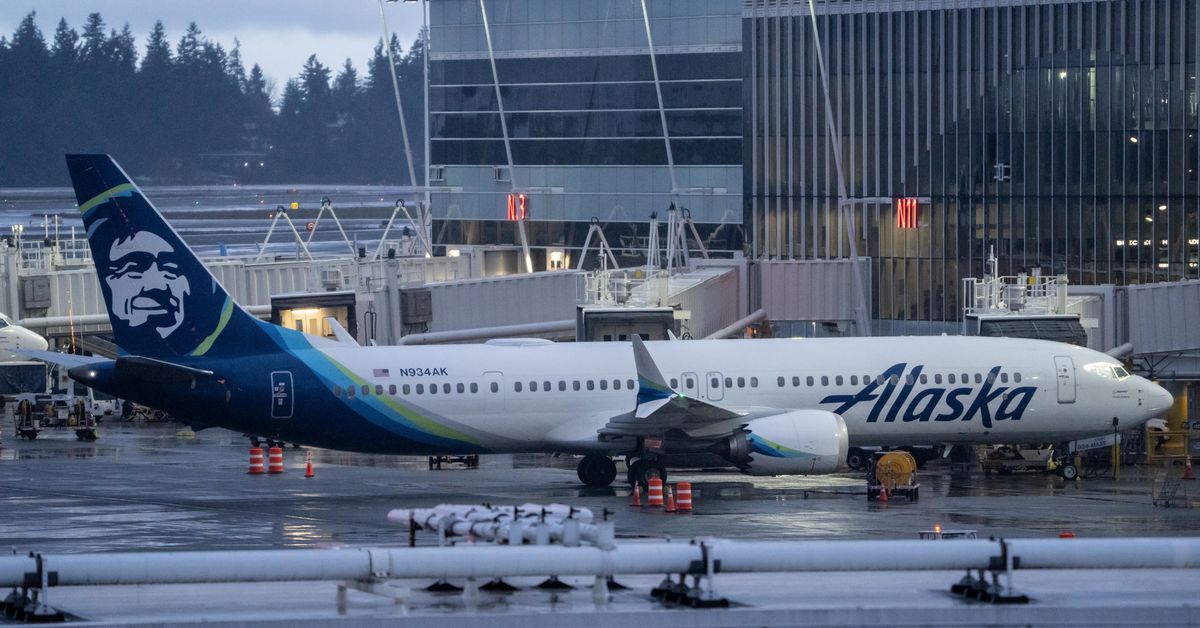
The Federal Aviation Administration (FAA) has ordered the “temporary grounding” of 171 Boeing 737 Max 9 airplanes this morning after a section of fuselage separated from the side of an Alaska Airlines flight on Friday, leaving a gaping hole in the plane. The agency said in its announcement that it will send an Emergency Airworthiness Directive out soon to require an inspection of all of the grounded planes that “will take around four to eight hours per aircraft.”
The New York Times reported yesterday that flight 1282 from Portland International Airport had made an emergency landing back at the same airport just 20 minutes later because of a “pressurization issue” that resulted in a wall of the plane blowing out. According to the Times, no one was in the seat immediately next to the wall when it disappeared, and only minor injuries were reported. The abrupt depressurization also reportedly yanked the shirt off of a teenage passenger sitting nearby.
Prior to the FAA’s decision, Alaska Airlines grounded its own fleet of 65 Boeing 737 Max 9 planes for inspection. This morning, the company said it had inspected over a quarter of its fleet, with “no concerning findings.”
Boeing 737 Max planes have been grounded in the past by the FAA and airlines for other issues, such as problems with the planes’ autopilot that led to two high-profile crashes, and unrelated electrical issues that were later identified. In a 2020 Senate report, the FAA was accused of helping Boeing manipulate recertification tests to get the planes back in service. Most recently, on December 28th, the FAA announced it was monitoring inspections of 737 Max planes after loose bolts were discovered in the rudder-control systems of two planes.
Yesterday, The Seattle Times reported that Boeing had petitioned the FAA for a safety exemption for the 737 Max 7, a smaller plane the agency hasn’t certified yet. The plane apparently has a defect that could cause an engine nacelle to break up. The article says existing 737 Max planes with the same defect are allowed to continue operating so long as pilots turn off the plane’s anti-ice system after “icing conditions dissipate to avoid overheating,” which could damage the nacelle. Boeing reportedly called nacelle breakup “extremely improbable” in its petition.
Update January 6th, 2024, 3:10PM ET: Added detail from a Seattle Times article about Boeing’s recent petition for a safety exemption.






